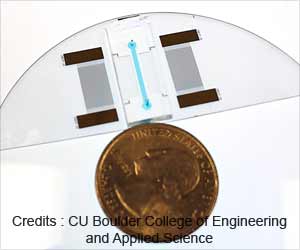New biophysical markers that could help improve the understanding of treatments for sickle cell disease have been developed by researchers.

‘New biophysical markers that could help improve the understanding of treatments for sickle cell disease have been identified by researchers.’





Currently, hydroxyurea is the only FDA-approved drug for sickle cell disease. The drug reduces sickling in red blood cells and is used to treat pain and reduce the need for blood transfusions in some patients, but it does not work in all patients. Researchers have been divided over what mechanisms cause the drug to work. Some believe it works by reactivating fetal hemoglobin, which is better at transporting oxygen than the abnormal hemoglobin that causes sickling. Others believe it works by increasing the volume of red blood cells, reducing the concentration of sickle hemoglobin. An interdisciplinary, international group of researchers has found new biophysical markers that could help improve the understanding of treatments for sickle cell disease, a step toward developing better methods for treating the inherited blood disorder.
"There is a critical need for patient-specific biomarkers that can be used to assess the effectiveness of treatments for sickle cell disease," said Subra Suresh, president of Carnegie Mellon University and co-author of the study. "This study shows how techniques commonly used in engineering and physics can help us to better understand how the red blood cells in people with sickle cell disease react to treatment, which could lead to improved diagnostics and therapies."
The findings from engineers, physicists and clinicians from Carnegie Mellon, the University of Pittsburgh, the Massachusetts Institute of Technology, Florida Atlantic University, Korea University, the Korea Advanced Institute of Science and Technology, and Harvard University will be published this week in the online early edition of the Proceedings of the National Academy of Sciences (PNAS).
In the current study, the international research team evaluated the biophysical properties - shape, surface area and volume - and biomechanical properties - flexibility and stickiness - of red blood cells under normal oxygenated conditions using electromagnetic waves to measure small differences in physical properties. The technique, known as common-path interferometric microscopy, allowed researchers to get a three-dimensional view of the cells.
Advertisement
"Our findings shine a light on the mechanism behind hydroxyurea action, which has long been debated in the scientific community," said Ming Dao, principal research scientist in MIT's Department of Materials Science and Engineering and co-author of the study. "It's exciting to see that using the latest optical imaging tools, we can now confirm which one is the dominating mechanism. Understanding the key mechanism of action will allow us to explore novel and improved therapeutic approaches for sickle cell disease."
Advertisement
Source-Eurekalert








